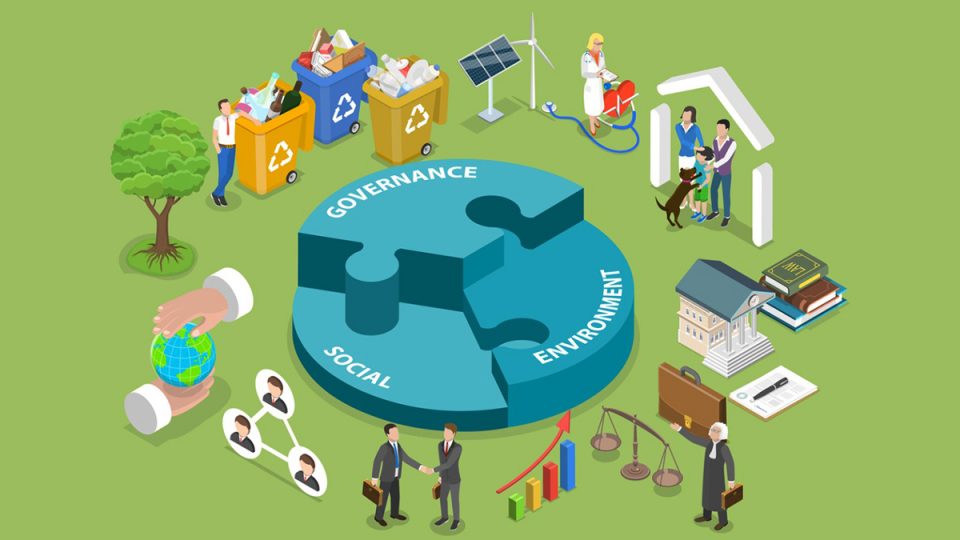Get more! Sign up for PLANSPONSOR newsletters.
To build a better foundation of understanding, the relatively new field of environmental, social and governance investing for retirement plans and other institutional investors can be placed into five distinct categories, according to experts in the field.
Greater understanding of the parameters for ESG investing is important for asset allocators, retirement plan sponsors and retirement plan advisers to recognize funds, strategies and firms that are engaged in meeting sustainability criteria. For employers to communicate to participants what ESG investing means, they have to first understand it, experts explained during the PLANSPONSOR Exploring ESG Virtual Conference What is ESG?
Despite ESG having evolved significantly over the years, many plan sponsors and retirement investors misunderstand ESG investing and conflate the approach with earlier iterations, explained Bonnie Treichel, founder and chief solutions officer at Endeavor Retirement.
“[ESG]’s not what it used to be: If you’re starting from the foundation of it’s just about excluding things, it’s something more now—that’s one big takeaway,” Treichel said during the conference discussion. “If attendees don’t learn anything else today, it would be to just throw out what you might think about ESG.”
Treichel categorized ESG investing into three buckets—impact, ESG screens and ESG integration—and Witold Henisz, the vice dean and faculty director for the ESG initiative at the Wharton School at the University of Pennsylvania—added another two categories.
Impact, the first “bucket” Treichel explained, is the direct investment in companies created to “do good for the world, while also aiming for financial return. The second category can be described as ESG screens, [and] that could be both the positive inclusion of things or negative exclusion,” Treichel said. “That’s what most people traditionally think [of] as ESG. The last one … is ESG integration: This is the incorporation of E, S and G factors, and you might just be looking at [incorporating] one factor or all three factors into the investment process through research and data to seek improved financial returns.”
Treichel advised that investors, plan sponsors and retirement plan advisers must remain cautious and to remember that an investment, fund or firm “doesn’t have to be labeled ESG or sustainable to be ESG integration.”
Henisz offered a brief background of ESG investing, as he explained the longer-term historical perspective of ESG development, which has changed and adapted.
“What’s different about ESG [now] and really important, particularly given the political rhetoric around the midterm elections and probably over the coming years, is that it’s evolved,” he said. “We’ve increasingly seen there’s an economic rationale, not just a religious or an ideological rationale, for attending to ESG factors.”
He added, “the whole moniker of ESG as opposed to [corporate social responsibility], social responsibility or others, was really designed to shift the focus and make this about the business case, taking into account the boycotts, taking into account the physical and transition risks of climate change, taking into account the lawsuits that might arise if you don’t treat your workforce appropriately.”
Additionally, he addressed Republican-led opposition to ESG investing for state retirement plan participants, which has cropped up from several U.S. states.
“We’re shifting from values to value, and we’re putting that front and center,” Henisz said. “When you hear opponents of ESG saying, ‘We’re not going to have those woke liberals on the East Coast tell us about what should go into our [state] plan[s], we’re not going to let their ideology [in]’—ESG isn’t about ideology. It’s about economics, it’s about getting the economics right [and] about how environmental, social and governance factors affect an investment thesis. There are different ways of doing that.”
Henisz added it is important for the retirement sector to have a greater understanding that sustainable investing has changed.
“What is distinguished about ESG, as opposed to where we started back in the 60s and 70s—with funds looking at not investing in munitions during the Vietnam War—is that we’re putting value front and center, and this is about a business case, and that dampens a lot of the opposition and the criticism to ESG that we’ve seen in recent months,” he said.
While Henisz favored the three categories Treichel laid out, he supplemented the list and said understanding ESG in categories can help plan sponsors and retirement plan advisers become better educated on what constitutes ESG and how to communicate it.
“One is an engagement strategy [in which] you don’t need to shift your portfolio at all, [and] you could buy an S&P 500 fund that just votes according to ESG principles,” he said, using the Engine No. 1 U.S. activist and impact-focused investment firm as an example.
The fifth category he described is thematic.
“[Investors] might want a water-[focused] or a gender-[focused] or a carbon-neutral fund,” he said. “Those are going to be taking on more risk [than engagement strategy] because you’re zeroing in on a given sector or a given investment thesis.”
“[With] those five buckets, we can start saying ‘okay, they’re different strategies, which one appeals to you,” Henisz said.
Ultimately, for the retirement sector, better understanding ESG, “comes back to where we started and educating,” he said.



